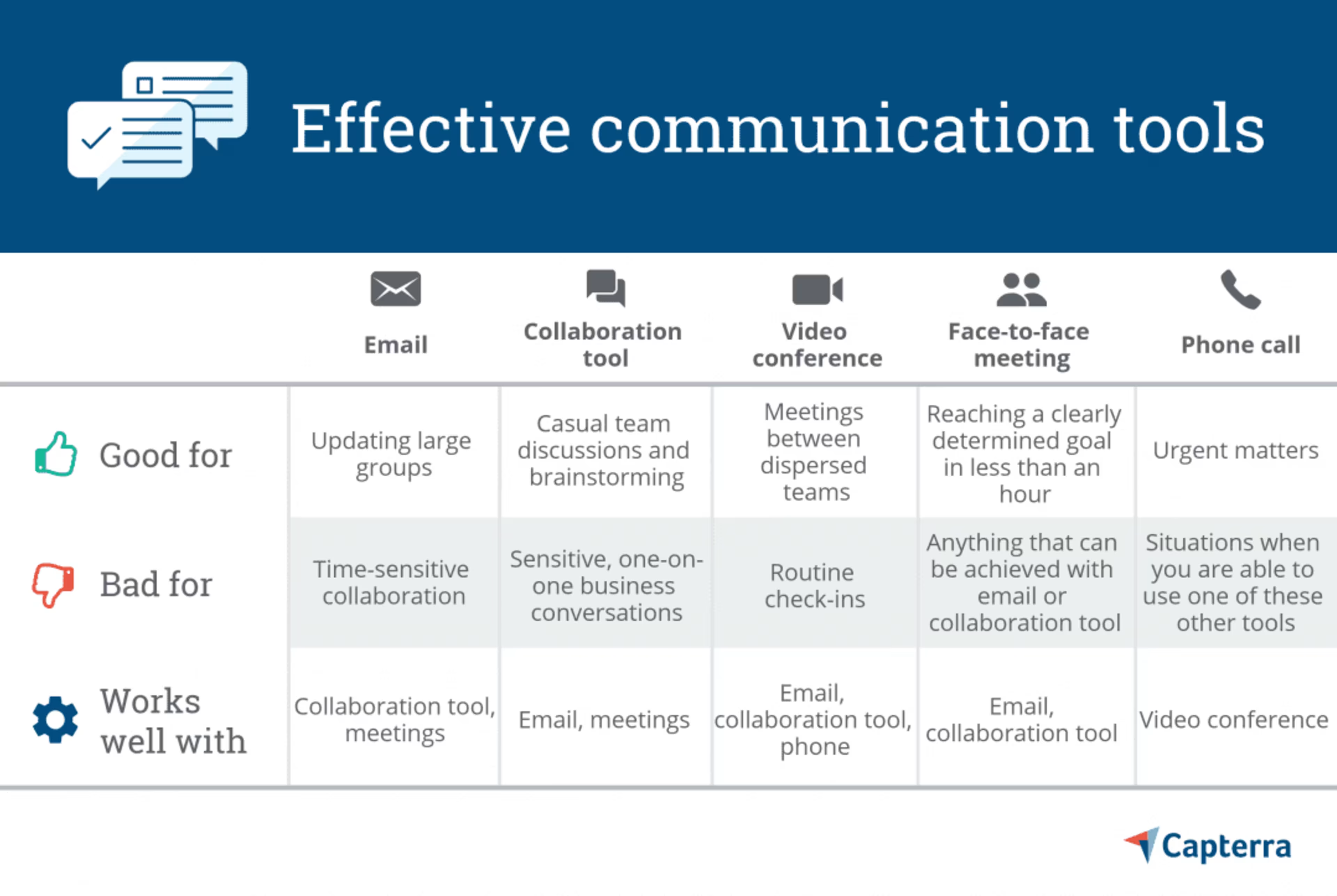I'm sorry, work, but this just isn't working anymore.
It's not me, it's you.
Your poor communication skills and outdated style are ruining this relationship.
[End scene]
OK, that was a little dramatic, but hopefully you get my point.
Sometimes work is a struggle and you just want to walk away. But as a small-business leader and project manager, it's your responsibility to identify the warning signs that mean you need to change your approach so your team can be as engaged and effective as possible.
Think of these warning signs as the dashboard lights in your car. Consistently missed deadlines let you know you need to lighten the workload or hire more employees before they burn out, just like the oil light in your car lets you know you need to change the oil before your engine explodes.

Whether it's updating your project management technology, hiring more employees, or scheduling fewer meetings and reducing paperwork, small-business leaders can improve effectiveness organization-wide by knowing when, and how, to change their entire approach to work.
How to make your team more efficient
1. Update your technology
No matter how hardworking and talented your team is, outdated technology will always hold you back. Outdated technology becomes evident by having to use too many different tools to work on projects—such as a separate collaboration tool, project tracking tool, and scheduling tool—or by something as simple as your team not being able to work from the field because of a lack of laptops.
A 2016 study by Dell and Intel found that 44% of all employees worldwide “feel that their workspace isn't smart enough" and 46% say tech-related issues are the “biggest time wasters at their current job."
Do you want your team to get work done or to waste time wrestling with outdated technology?
Signs of trouble:
Your team is struggling to communicate, getting burned out, and missing deadlines despite working long hours.
Your top talent is leaving to work for different organizations.
You have a disproportionate number of employees bringing their own devices to the office just to get their work done.
The change you should make:
Survey your team to see if your project management software and other work devices are fulfilling their needs. This can be as simple as asking them if they have the tools they need to get their job done and what technological issues they've run into.
You should also perform an internal technology audit: Does each member of your team at least have a functional laptop and smartphone?
2. Hire more employees
If work isn't getting done, it's possible that you just have too much work to be done and too few people to do it. This can lead to frustration, burnout, and unsuccessful projects.
"Doing more with less" hasn't really worked for print journalism, and it won't work for your team, either. The more capable people you have, the more work you can do.
PMC Insurance Group reports that being understaffed can lead to employee injury and illness, missed deadlines, and increased turnover.
If you think you're working with a skeleton crew now, how will you function when your employees start leaving because they're being overworked?
Signs of trouble:
Employees are letting tasks fall through the cracks and are missing deadlines.
You're asking your employees to take on tasks outside of their job description.
Employees are leaving the team without being replaced.
The change you should make:
Either invest in staffing your team, or scale back your scope. You're only setting your team up for failure if you stretch them too thin: They'll eventually burn out and leave.
Though you may think you don't have room in the budget to hire someone now, the right hire can increase revenue and effectively pay their own salary while reducing strain on the rest of the team.
3. Fine-tune your meeting schedule
Few things can kill momentum at work like an excessive meeting schedule.
A recent Harvard Business Review survey of almost 200 executives found that 65% said meetings keep them from completing their own work, and more than 70% said meetings are unproductive and inefficient.
If work has become a struggle for you and your team, there's a good chance that meetings are at least partially to blame.
Signs of trouble:
Your schedule is overrun with meetings.
Team members are distracted or even walking out in the middle of meetings because their presence isn't actually needed.
You're missing deadlines and projects are failing, but your queue of meetings just keeps growing.
The change you should make:
Luckily, changing the way you work by repairing a faulty approach to meetings is one of the easiest fixes a small-business leader and project manager can make.
Start by asking yourself these five questions:
Why are we having this meeting?
Could this meeting be an email?
Can these meetings be consolidated?
Who needs to be part of this meeting?
How long does this meeting need to be?
Answering those questions honestly should help you pare down your meeting schedule and let your team get back to their work; our guide on running an effective meeting schedule can help you fine-tune your approach.
4. Improve the way you communicate
Even with all the advances in communication tools over the past several decades—smartphones, instant messaging, video conferencing—the Project Management Institute still finds that poor communication leads to almost 30% of all project failures.
Updating your technology and hiring new employees can require a significant investment, but improving team communication just requires a new approach (assuming you already have the basic tools).
Signs of trouble:
Important team information is getting lost in reams of emails.
Messages are not getting to their intended recipients because of communication channel bloat (you don't have a centralized collaboration hub).
Your team isn't communicating with each other at all.
The change you should make:
Implement a collaboration tool for on-the-fly communication and encourage your team to use its instant messaging feature rather than sending emails.
Check out our chart on effective communication tools for a handy guide on when to use different tools, and when to avoid them.

5. Encourage more breaks for increased productivity
Doing less work to improve productivity may seem counterintuitive, but it's really not: Sometimes you just need to step away from work for a bit to come back refreshed and increase your effectiveness.
Jeffrey Pfeffer, a professor of organizational behavior at Stanford Graduate School of Business, says that "When people come to work sick, they're not as productive. Companies have problems with presenteeism—people physically on the job but not really paying attention to what they are doing—with lost workdays from psychological stress and illness."
By working long, consecutive hours, you may feel like you and your team are getting more done, but are you? Or are you just grinding on worn-out treads?
Psychology Today says that frequent breaks can motivate and enlighten you, help you learn more, improve emotional and physical health, and help you make better decisions.
Signs of trouble:
Your team is working long hours but getting burned out and missing deadlines.
You and your team are making mental mistakes such as producing bad code, forgetting tasks, or failing to respond to clients.
You and your team are reaching the end of the year with lots of unused PTO.
The change you should make:
Encourage your team to take time off and take breaks when they're at work.
On top of that, as a manager, you need to build more slack into the system so that your workers don't constantly feel overworked and you have room to adapt to changing conditions.
The best approach for productivity, according to Gartner analyst Robert Handler, is to give your team a workload of about 70 to 80% of what you think they can actually handle.
While that might make the taskmaster managers and coaches of the world bristle, it actually makes for more productive, and less burned out, teams.
As Capterra senior analyst Eileen O'Loughlin says, "Over-committing resources costs your organization time, money, and value, while leaving optimal slack in the system does not."
Be the work change you want to see
Do you have stories of successfully changing the way your team works for better execution? Whether it was updating your technology, communicating better, or building a little slack into the system, these stories make me happy, so please share them with me on Twitter @AndrewJosConrad.